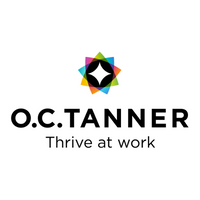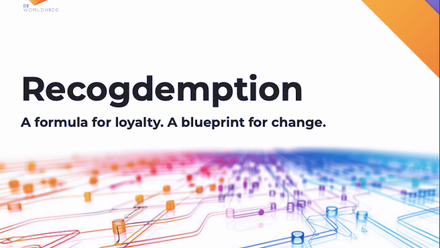Celebrate: How social recognition is a top employee reward
Social recognition, which is the giving of appreciation socially rather than behind closed doors, has a crucial role to play in reaffirming organisational purpose and nurturing belonging.
Here are a few important ways to use social recognition for maximum impact.
1. Connect recognition back to purpose
Purpose can’t be an afterthought, but must become the motivating force moving the organisation forward and guiding its strategy.
It’s the reason the company exists, bonding everyone together to achieve a common goal. And so it’s crucial that recognition is used to connect employees’ efforts and achievements back to this purpose.
For every recognition moment, it must be explained how the employee who has gone ‘above and beyond’ is helping to realise the company’s purpose and is a valuable part of the bigger picture. Those witnessing the recognition will also better understand how their actions contribute to overall company success.
2. Champion peer-to-peer appreciation
True social recognition can’t take place when it’s just leaders recognising their teams. Peer-to-peer recognition must be encouraged and championed (together with recognition by employees of managers).
If necessary, train employees on how to give recognition well so that it’s done publicly, authentically, in a timely fashion and in a meaningful way.
Effective peer-to-peer recognition means employees feel stronger connections to their colleagues. In fact, when peers give recognition for great work and extra effort as a consistent part of everyday culture, employees are 15 times more likely to feel an above-average connection to their team-mates, according to O.C. Tanner’s Global Culture Report.
3. Celebrate work and personal moments together
When teams celebrate work anniversaries, birthdays and other milestone moments together, they are 11 times more likely to enjoy an above-average connection. This connection is vital for achieving that all-important sense of belonging and community.
4. Use technology to make appreciation easy
If the process of giving recognition is seen as hard or time-consuming it simply won’t happen, which is why companies must make it as easy as possible for employees to appreciate others. A recognition platform that allows recognition giving as part of an employee’s natural flow of work will allow it to become an integrated part of company culture.
5. Plan regular time for public recognition giving
Recognition giving must be given in a purposeful manner, so time must be set aside to do it publicly, from incorporating into meetings through to more formal recognition celebrations.
6. Have a recognition wall
Have a public space where notes of appreciation are visible to all. This could be on a physical recognition wall, as part of a recognition section of the intranet or through a social feed.
7. Use symbolic awards
The giving of a symbolic award as part of a recognition moment is powerful. It communicates a company’s values and purpose, reflects on the significance of an employee’s contributions and helps to build a sense of community by increasing colleagues’ emotional connections to each other.
With research revealing that 54% of employees who left their jobs in the past six months did not feel valued by their organisation and 51% lacking a sense of belonging, it’s important for companies to harness social recognition to strengthen purpose and connections.
The more ways an organisation gives its people to recognise each other, the more frequently recognition will happen, with organisations that enjoy truly integrated social recognition 648% more likely to thrive.
Supplied by REBA Associate Member, O. C. Tanner
Giving teams the integrated tools they need when, where and how they need them.








